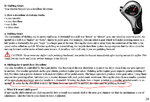Justin McLeod
Member
We have the e3 metro and soon the e3 Dash. This is our first e bikes and our first bikes with more than one gear. The question is when changing gears should you peddle while changing or stop peddling, change and then peddle? I just saw a great review on this blog about the Neo carbon and i think the guy said never peddle while changing gears. I was like….AHHHH!!! I continue to peddle when changing so is this bad for the bike? Whats the correct way to change gears on an e bike or any bike with multiple gears?
